What is an Update Form?
An Update Form is a powerful tool that helps you add or update data for Contacts, Companies or Staff who are already created in your CRM. Update Forms are different to Kickoff Forms in that they are never accessible to an Unknown Target.
Update Forms cannot be accessed in a non-authenticated way - this means that Update Forms cannot be made publicly available to anyone on the internet. If you need a Form that can be publicly accessed, you should consider Kickoff or General Forms.
Kickoff Forms can be accessed by anyone on the internet via a publicly available link or by embedding the Kickoff Form into your website. But, Update Forms are different, and more secure in the sense that they can only be accessed in a way that is authenticated, meaning that we always know who is accessing the Form, and therefore, the data that is submitted is more reliable.
When the Contact or Staff Member completes the Update Form, the Form will update the data in their CRM or Staff Profile. If the data for a particular field is updated with new data, the existing saved data will be overwritten/updated.
CLICK HERE to learn about types of Forms
How do I create an Update Form?
Navigate to the Forms menu item, and click +Create Form.
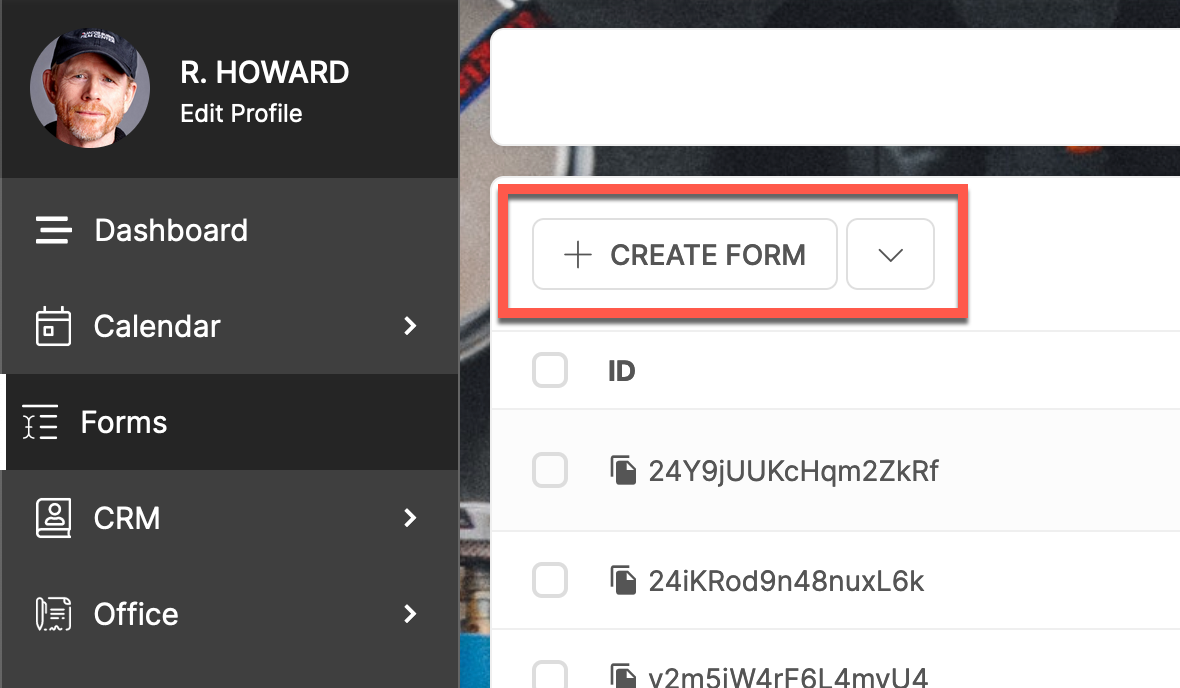
You will then be able to choose Update Forms. Alternatively, you can click the icon beside the +Create Form button and choose from the dropdown menu.

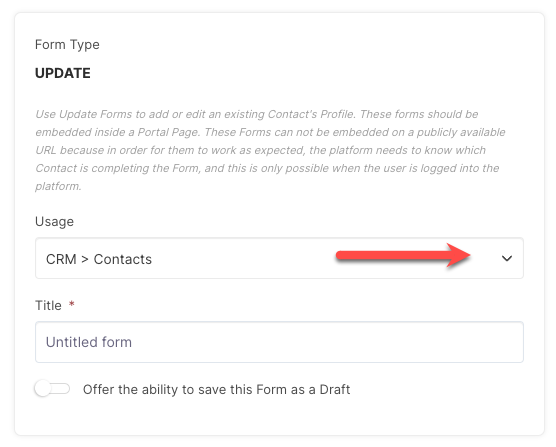
Form Usage: is where you stipulate if the Form is going to be aimed at Contacts or Staff. The Usage will default to Contacts however you can click the usage dropdown arrow to select Staff.

If you are changing the usage to Staff/Team, you will be presented with a warning that all settings will be reset. Click O.K to change the form settings to Staff/Teams.
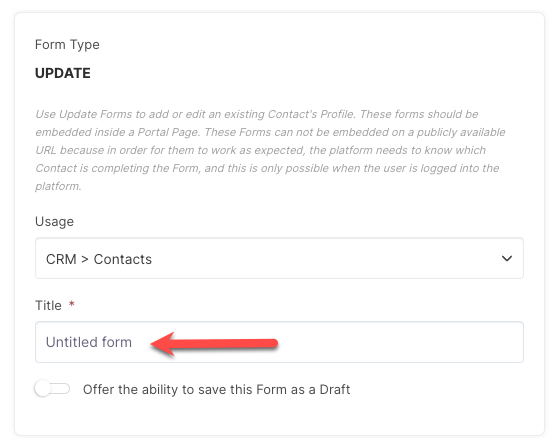
Form Title: Give your Form a Title. By default, "Untitled Form" is populated into this field but you can override it with a Form Title of your choice.
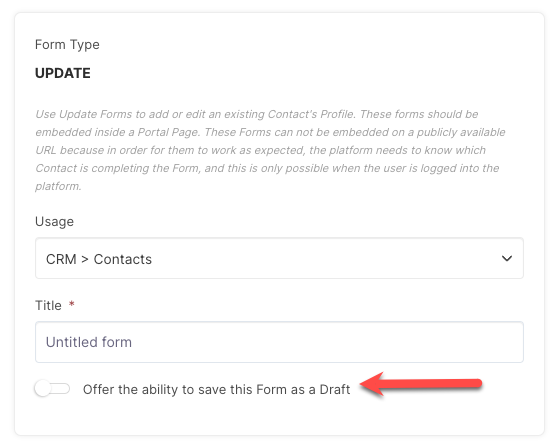
Allow the Contact or Staff Member to Save the Form as Draft
- You can decide if you'd like to offer the option for your end user to save the Form as a Draft. If enabled, the Target will will see a "Save Draft" button alongside the "Submit" button whenever the Form is displayed.
- The Target can save a partially completed form as a Draft and return to it at any time to complete the Form. Be aware that this feature uses cookies to accomplish the goal, so if the Target clears browser cache or prevents cookies, this feature may not work as intended.
Building your Form Fields
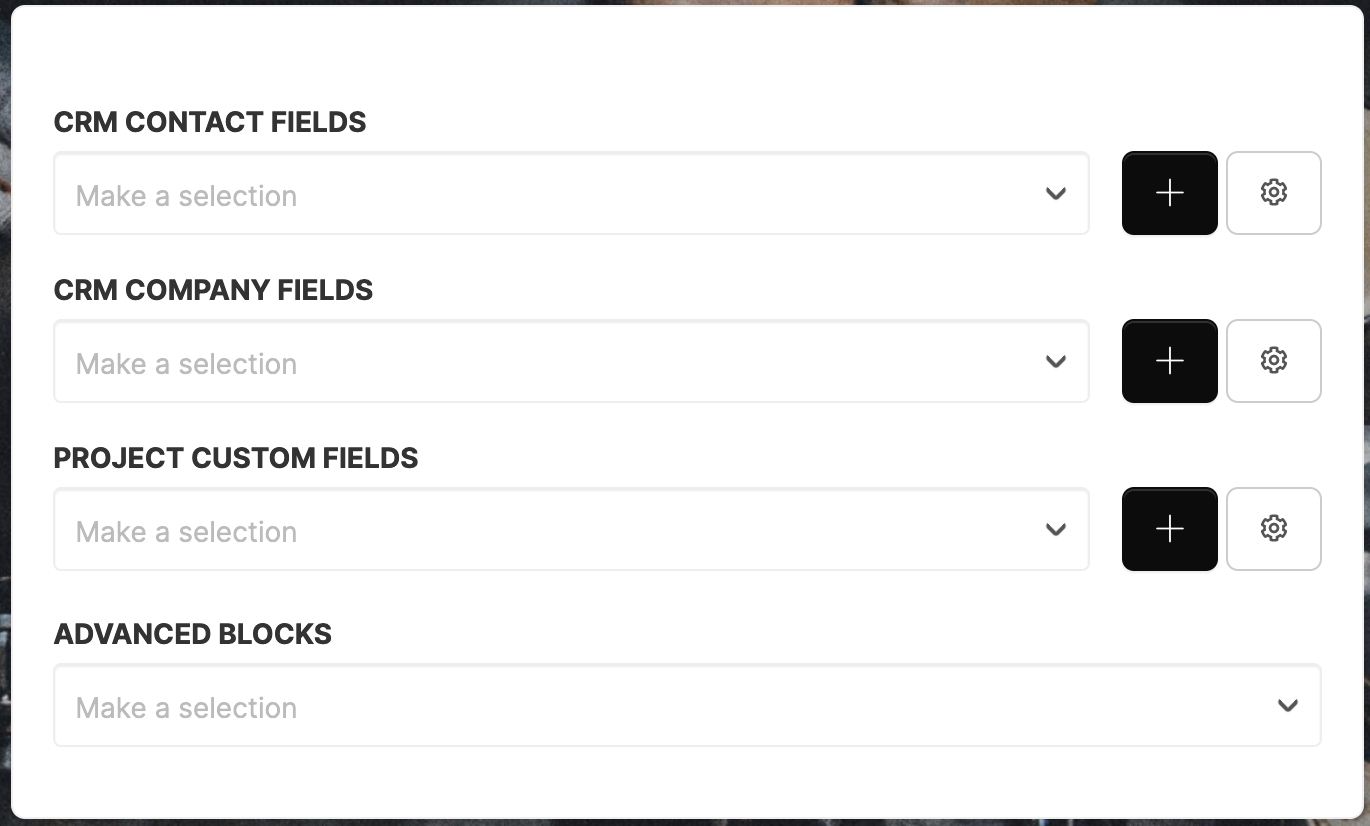
Use the dropdown menu to choose Default or Custom Fields to add to the Form. Any Custom Fields you have already created will be in the list. You can also click Create Custom Field to create new ones.
TIP: If you choose to Add Selected Custom Field, you are also able to include Project Custom Fields.
CLICK HERE to learn about Custom Fields
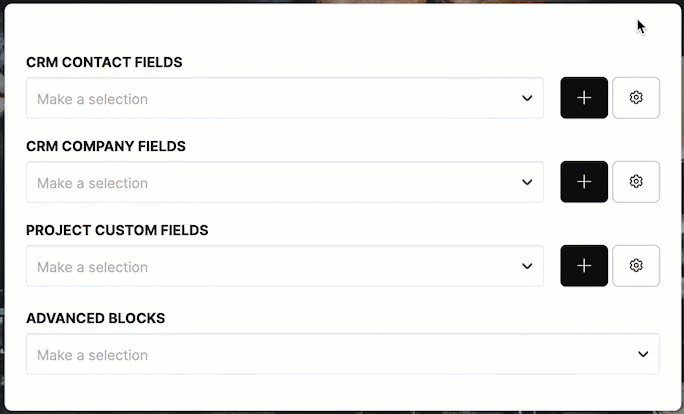
Once you add the field, you can rearrange the order by clicking the icon and dragging it into place. You can delete a field by clicking the red icon.
Each default or custom Form Field will display icons to help you quickly identify what type of field it is.
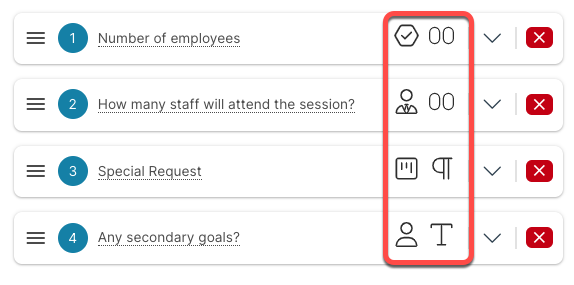
CLICK HERE to learn about Form Field Icons.
To configure settings for a field, click the arrow.

Required: This field will be required to have input and the user will be unable to submit the form until it has been filled out.
Placeholder: The field will be open for any data input.
Pre-Fill Value: The value you input into the provided field will be shown by default.
Read Only: The field will be seen by the user, but no action will be needed.
Hidden: The field will be hidden from view and the user will be unable to input any data into it.
Subtext: This is a secondary title for the field. You can use this to fill in a description, give an example, or for general information you think would be useful to your Contact filling out the Form.
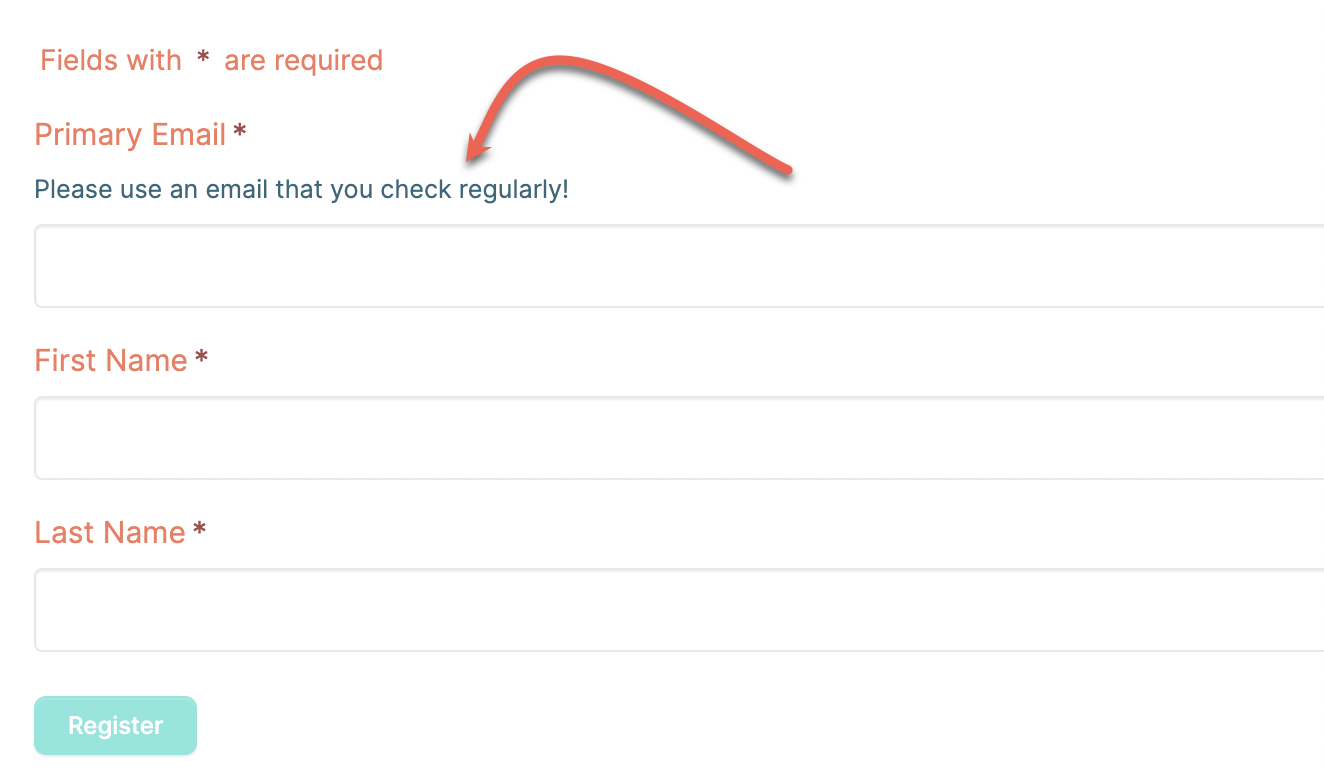
CSS Class: This field allows you to add your own custom CSS class to the Form Field. You can then target this class in Custom CSS on the Link/Embed tab. You can have multiple classes per field but you will need to separate each class with a comma. Let your imagination run wild!CSS ID: This field allows you to add a CSS ID to your Form Field. You can then target this ID within your Custom CSS on the Link/Embed tab.Field Styling & Layout Classes: This section contains pre-made CSS classes that will allow you to customize your fields without having to do the code yourself! See the section below for more information.
FIELD STYLING & LAYOUT CLASSES
Below are the classes that are available for you to use. You can have up to 4 columns per row and you can even mix & match as long as the percentages equal 100%. We also have some style classes that will allow you to add emphasis to the important fields.
field_first - Required in the first column of a row when using these classes to make multiple columns.field_half - Directs a field take up 50% of the available width in a rowfield_third - Directs a field take up 33.3% of the available width in a rowfield_fourth - Directs a field take up 25% of the available width in a rowfield_cb - Places a light grey background behind the field and some added paddingfield_important - Places a soft red background with red border and added padding
Usage GuidelinesExample: For two fields on the same row, the field you want on left should have two classes, separated by a comma: field_first, field_half / The field on the right only requires one class: field_half / You can mix & match the classes as long as it adds up to 100% in a row. Remember that the first field in any row should also be given the "field_first" class, separated by a comma.
TIP: This type of Form will be updating/adding information to existing Contacts, so you won't necessarily need to add fields like First Name and Last Name.
How Can I use Company Custom Fields?
Use the dropdown to select a Company Custom Field that you created earlier using Custom Fields or you can create a new one by clicking the + button. To manage your Custom Fields click the settings icon.

When you create the Company Custom Field the Usage you choose can be CRM > Company > Public or CRM > Company > Private.
CRM > Company > Public is visible by the Primary Contact and all associated Contacts
CRM > Company > Private is only visible by the Primary Contact.
CLICK HERE to learn about Custom Fields
How Can I use Project Custom Fields?
You can use the Project Custom Fields dropdown to select a Project Custom Field that you created earlier using Custom Fields or you can create a new one by clicking the + button.
Once you have selected your Project Custom Field from the dropdown you can determine what project the Custom Field will be added to, by clicking the Apply To dropdown.
THERE ARE THREE DIFFERENT OPTIONS
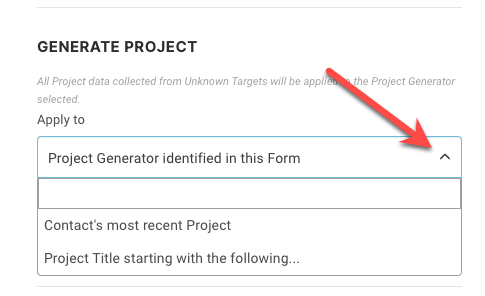
Project Generator - Select the Project Generator in the Project Generator Field.
Contact's most recent Project - This selection will add the Project Custom Fields to the most recent Project.
Project Title Starting with the following - This selection will provide a Search Box so you can select the relevant Project Generator.
IMPORTANT: Each Project Custom Field will require you to add your 'Apply to' preference. Please note, you can choose different locations for different Project Custom Fields.
How Can I use Staff Fields?
When creating a Staff Update Form, you only have Staff Fields and Advanced Blocks to choose from.
You can use the Staff Fields dropdown to select a Default Staff Field or a Staff Custom Field that you created earlier using Custom Fields or you can create a new one by clicking the + button.
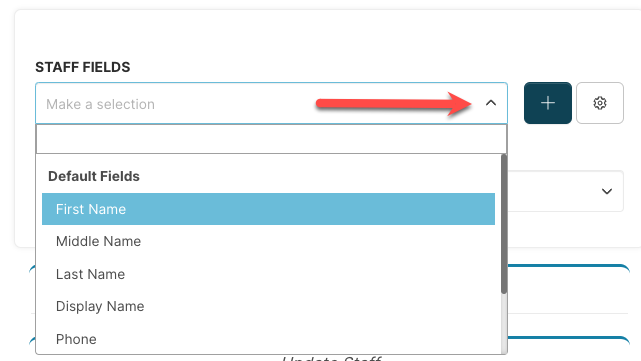
How Can I use Advanced Blocks?
For Contacts/Companies you can use the Advanced Blocks dropdown to select HTML Content, Appointment Block, Signature Block, or Choice Block that you can insert before, after, or between fields.
For Staff/Teams you can use the Advanced Blocks dropdown to select HTML Content, Signature Block, or Choice Block that you can insert before, after, or between fields.
HTML BLOCKS: HOW DO I ADD MY OWN CONTENT IN ADDITION TO FORM FIELDS?
You can insert HTML Content Blocks that you can use to insert text, images, videos, etc. into the Form. You can place these blocks before, after, or even in between fields and can add as many as you'd like.
Select HTML Content from the Advanced Blocks dropdown menu.
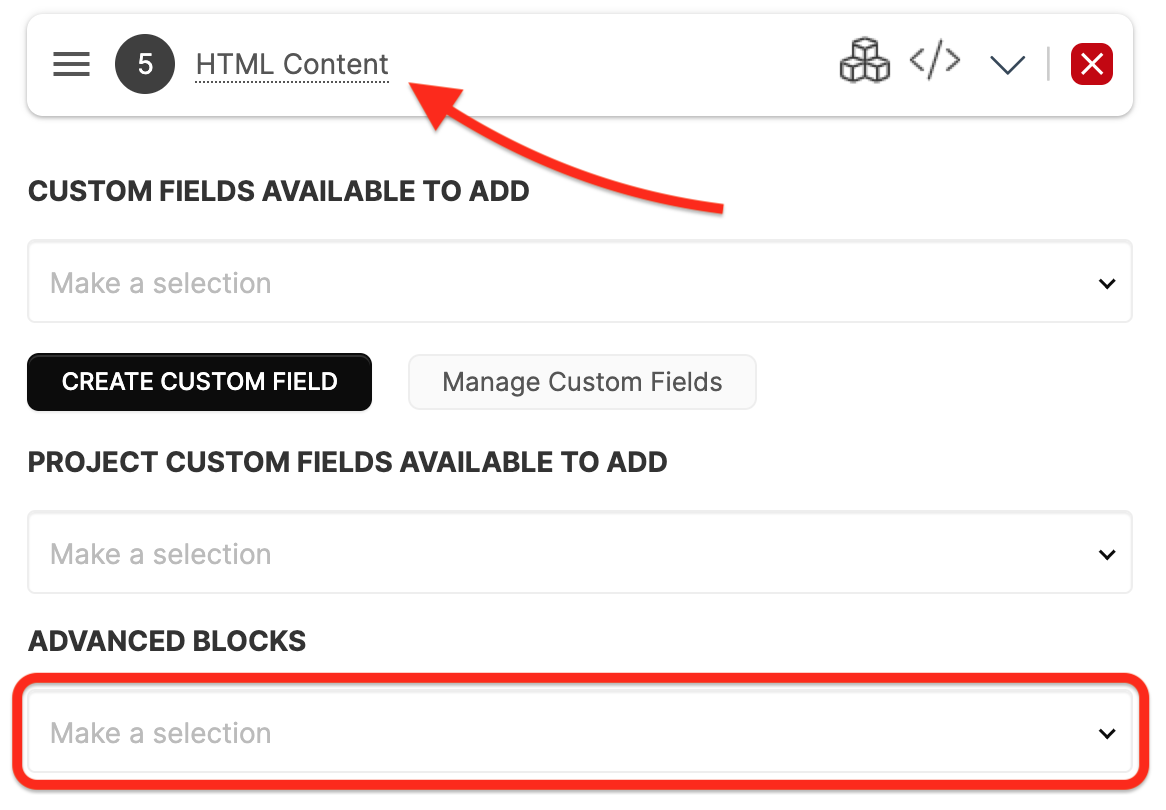
Once selected, the Block will automatically be added to the list above.

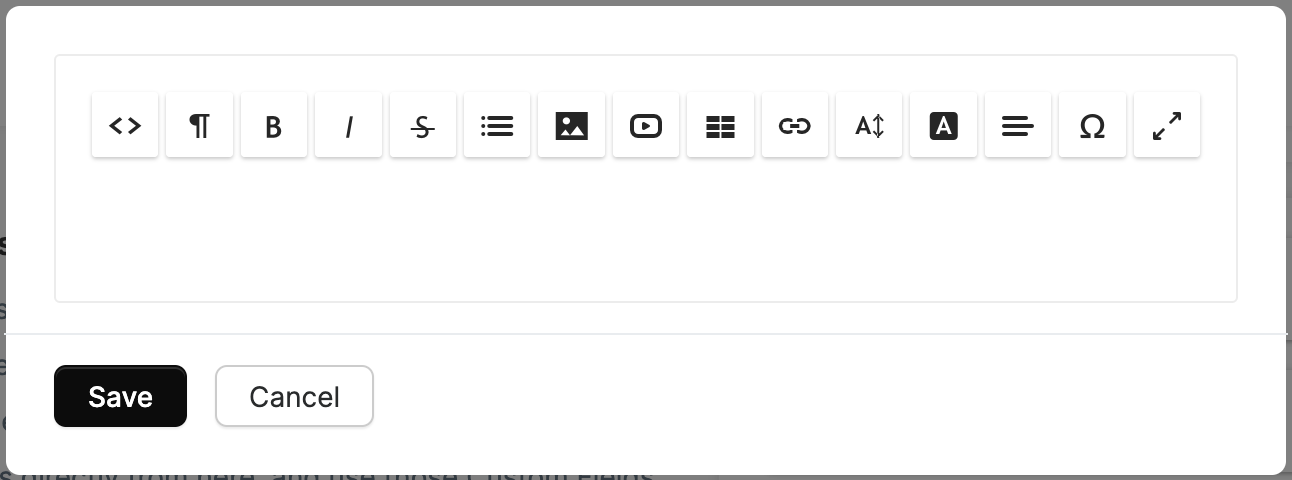
A standard WYSIWYG editor will appear in which you can add content. Click the <> icon to switch to HTML.
SIGNATURE BLOCK: HOW DO I ADD A SIGNATURE AREA FIELD?
You can use a Signature Block in Forms to easily & quickly get important sign-off on agreements, policies, or authorizations
Get started by opening Advanced Blocks and selecting the Signature Block

After you have added the Signature Block, click the arrow to customize the text/labels that appear on the front end of the Form.
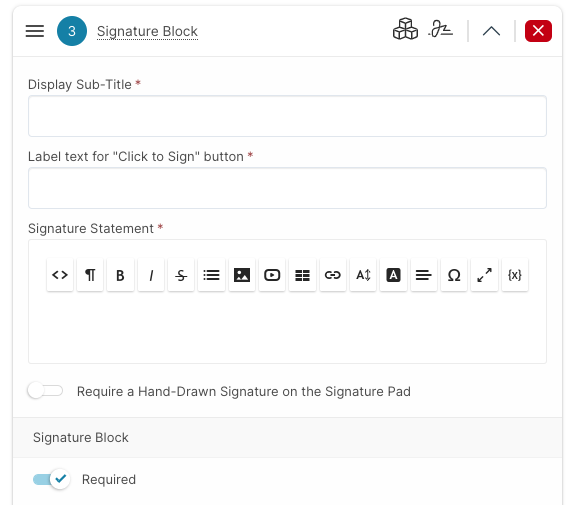
You can add multiple Signature Blocks to the Form and you are able to customize each one separately.
APPOINTMENT BLOCK: HOW CAN THE CONTACT BOOK AN APPOINTMENT WHILE SUBMITTING A FORM?
Select Appointment Block from the Advanced Blocks dropdown menu.
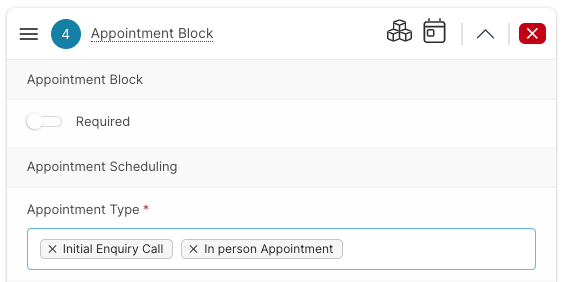
Once selected, the Block will automatically be added to the list above. You will then be able to determine the Appointment Type(s) under Appointment Scheduling. You can select multiple Appointment Types using the dropdown.
CHOICE BLOCK: HOW DO I CUSTOMIZE A CONTACT'S AUTOMATIONS BASED ON THEIR CHOICES?
You can insert a Choice Block to allow a Prospect or Client to choose different paths while submitting an Update From. For example, you could set up a choice of different Subscription Plans with varying prices. Or, you could add the Contact to different Circles with unique viewable content depending on their choices.
In action, this Block will appear as a dropdown menu for the user to select from. Which Automations & Actions are triggered will depend on which option they choose.
Select Choice Block from the Advanced Blocks dropdown menu.
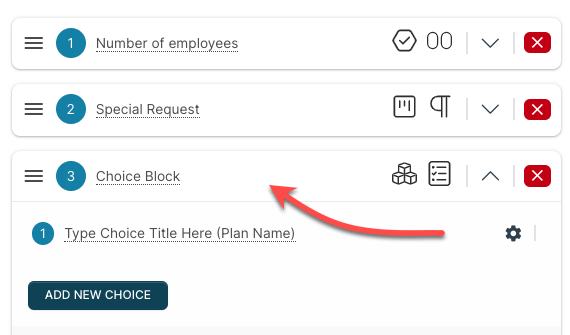
Once selected, the Block will automatically be added to the list above with one Choice by default.
IMPORTANT: When you add a Choice Block to the list, the "Form Assignments & Automations" section will be removed. Instead, you'll be filling out this information for each Choice by clicking the gear icon next to your Choice options.
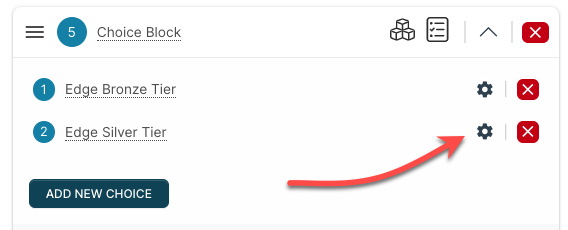
Click the icon to configure what will happen if the Contact makes this particular choice.
Click the Add New Choice button to add additional Choice Sub Blocks.
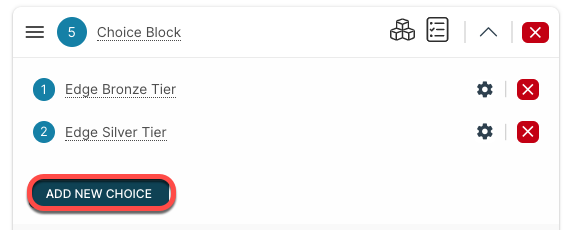
In practice, "Choice Block" will be the title of the field, and the Choice options will represent what you can choose from the dropdown menu.

How do I trigger Automations?
If you are using a Choice Block you will set your Automations for each choice by clicking the gear icon. If you are not using a Choice Block, you will assign Automations in the Trigger Automation dropdown at the bottom of the form.
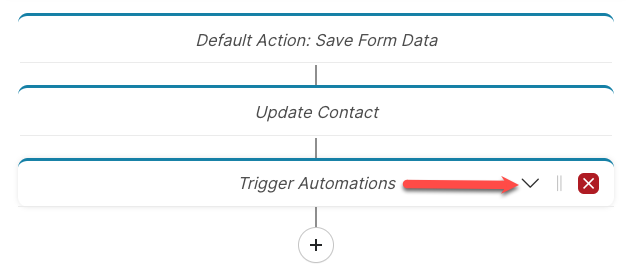
CLICK HERE to learn about Automations
How do I send Email Notifications?
Click the +icon at the bottom of the Form to reveal the Send Email Notification button.
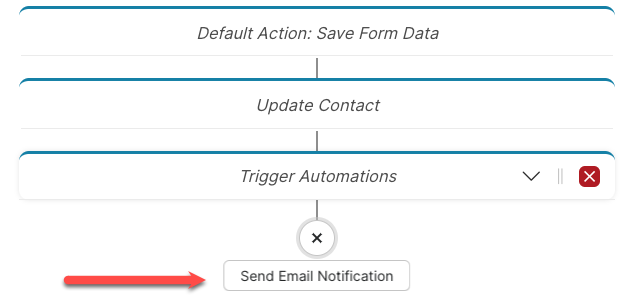
You can assign the Email Notification to one or many Users;
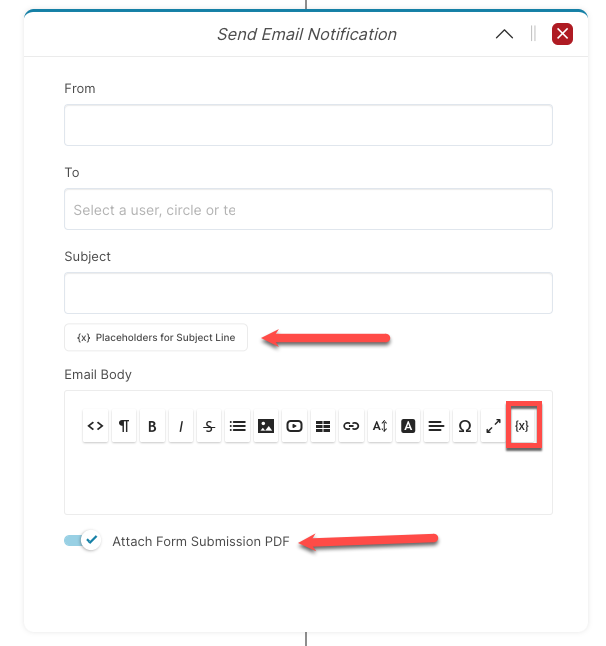
Click the {X} Placeholders for the Subject Line button to reveal the Placeholder Options.
Click {X} to reveal the Placeholders available for the body of the email.
Additionally you have the option to toggle 'Attach the Form Submission PDF' if you would like a copy of the Form submission attaching to the email.
How do I configure Conditional Logic for Fields?
Conditional Logic allows you to create a Form that changes based on user input. Depending on what the Target (user who is filling out the Form) enters into a field, it can trigger whether or not to Show or Hide a different field.
All Custom Fields (with the exception of the "File Upload" type) can be configured to trigger Conditional Logic.
While in the editing screen, you'll see a tab to the right of the screen with a icon. You can click on this at any time to open a side panel, in which you can then configure your Conditional Logic.
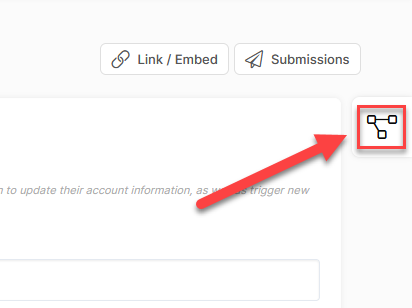
CLICK HERE to learn about Conditional Logic
How do I configure Embedding options for an Update Form?
During editing of a Form, you can click the Link / Embed button located in the upper right-hand corner of the screen.
After you have saved the Form, you can access this screen by clicking on the Options menu button beside the Form name and selecting Link / Embed.
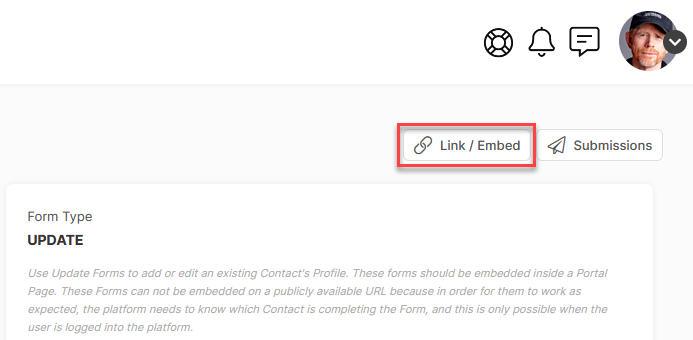
What you have configured in your Default Form Embed Settings will be applied here. However, you can change these settings individually.
The setting options are identical to the ones in CRM Settings.
CLICK HERE to learn about Form Embed Settings (CRM Settings)
How do I switch between Forms?
On the top right you will see a dropdown. It will be titled the name of the current Form you are working on. You can easily switch to a different Form and a different Form type by clicking on the dropdown and selecting one from the list.
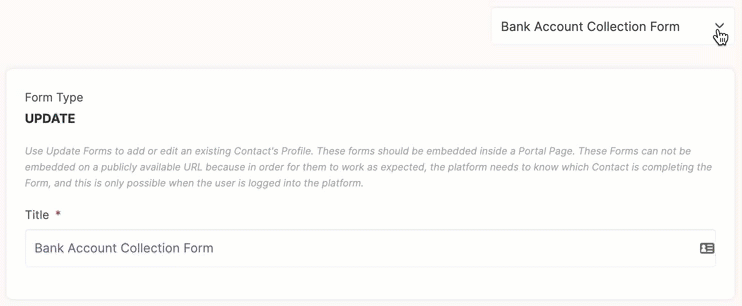
How do I use an Update Form?
On the Link / Embed screen, a Placeholder is available for you to use within the platform. Simply click the Placeholder to copy it to your clipboard.

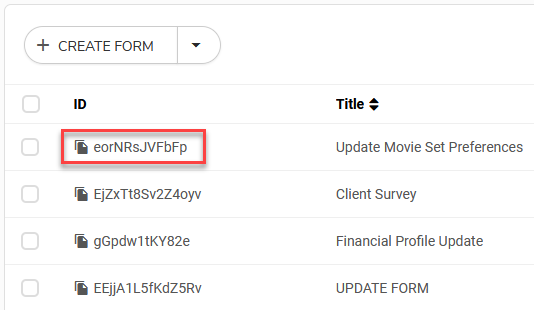
You can use this Placeholder in a Portal Page with a Text Block to embed it.
CLICK HERE to learn about the Content Block Editor

IMPORTANT: Forms will not render in the Preview. Just Impersonate a Contact whom has access to the Portal Page to see how it will look. Update Forms are only available for Contacts at this time, and will not render for Staff Roles.
STAFF SUBMIT
Staff Submit Forms can be completed by you or members of your staff to add new data or update data in the platform.
In the Forms List View, click the Options menu button.

Select the Staff Submit option and the Update Form will open in a new tab with a Contact selector. When submitted, the data will be updated and all associated automations will be instantly triggered.
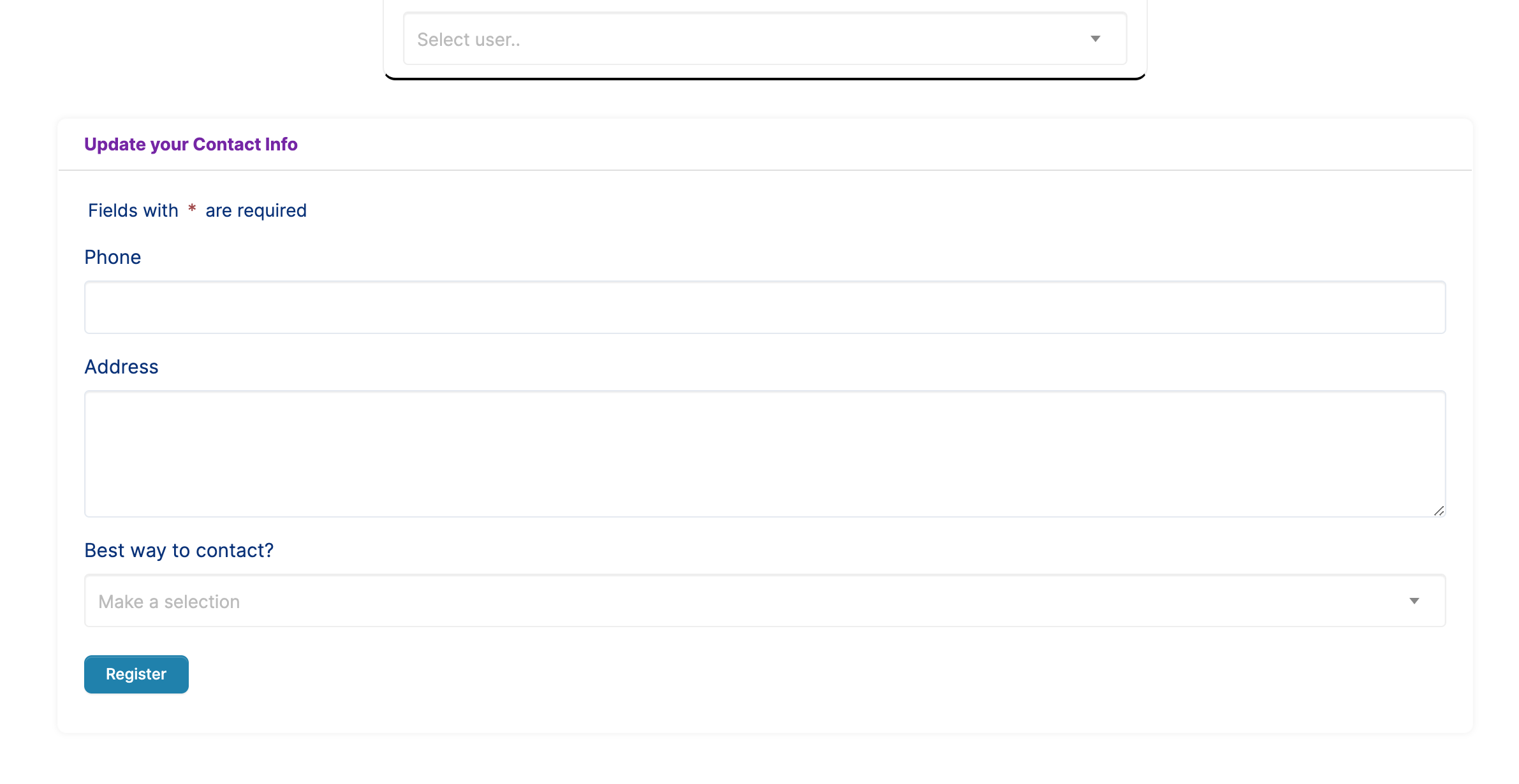
How do I view submissions for my Update Form?
While viewing Forms, click the Options menu button and select Submissions.
Alternatively, you can click the Submissions button while editing the Form, located in the upper right-hand corner of the screen.
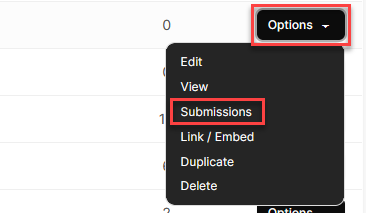
Each user will have their Name and email address listed, as well as the precise date and time the Form was submitted.

To manage submissions, click the Options menu button beside the submission you'd like to manage.

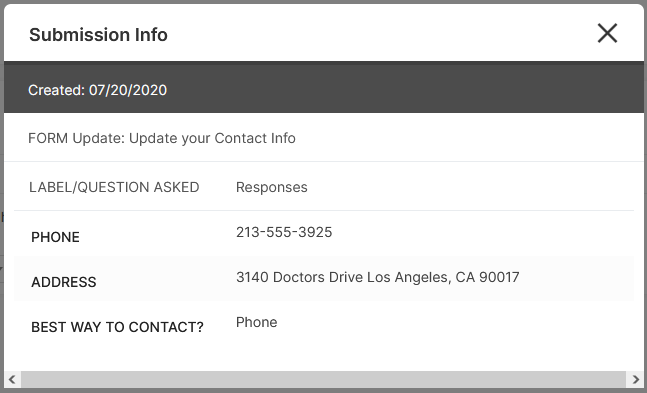
Download PDF: Download a PDF version of the submission document.
Delete: Remove the submission form from the platform. Note: This cannot be undone.